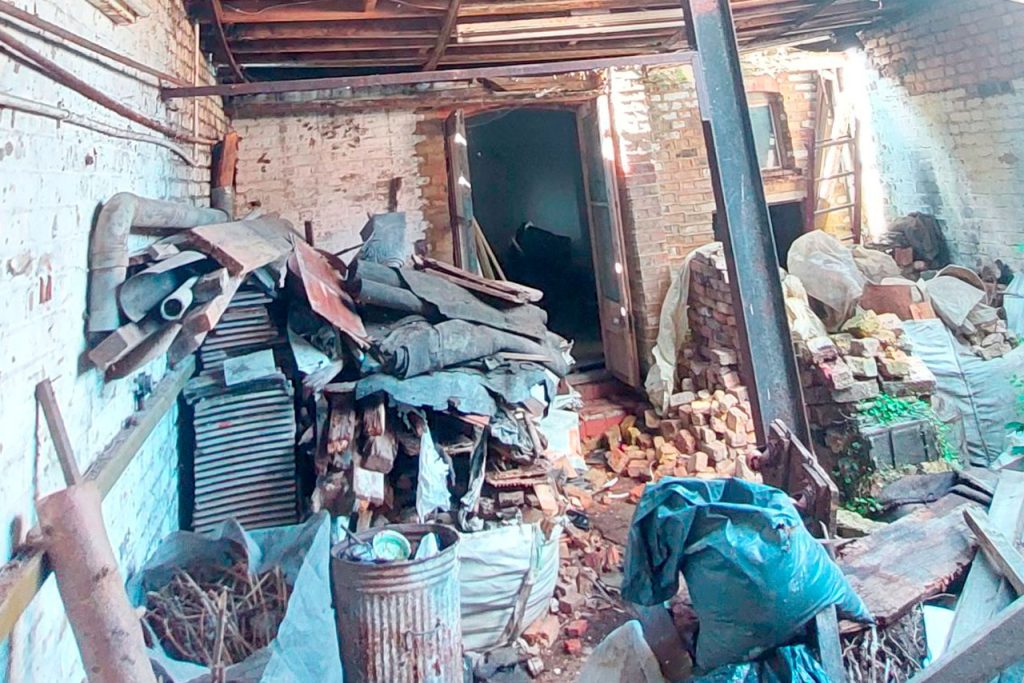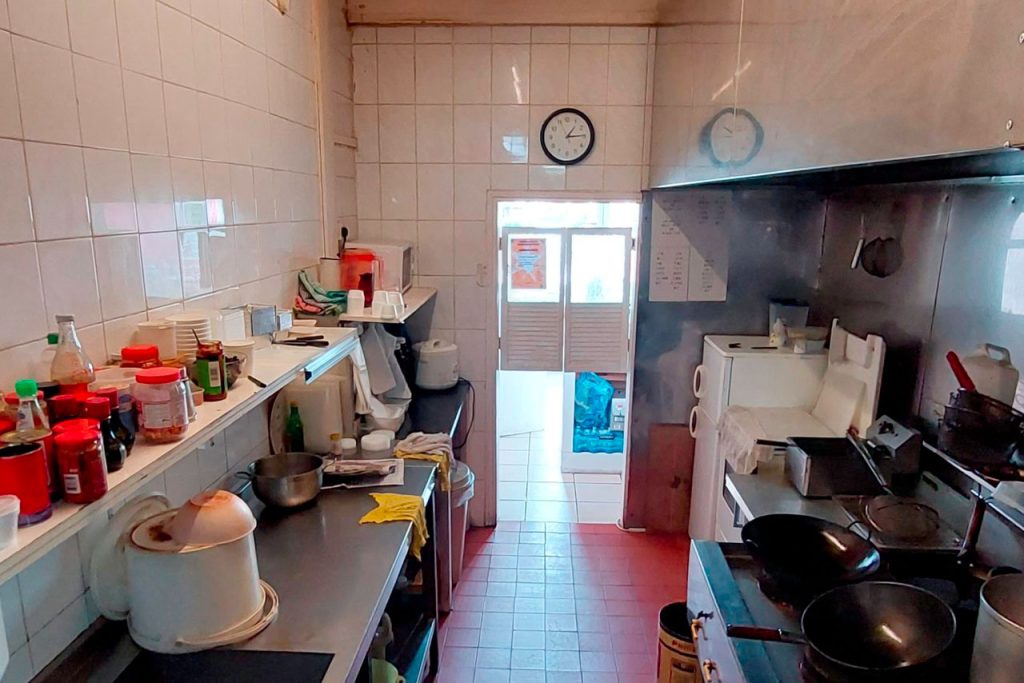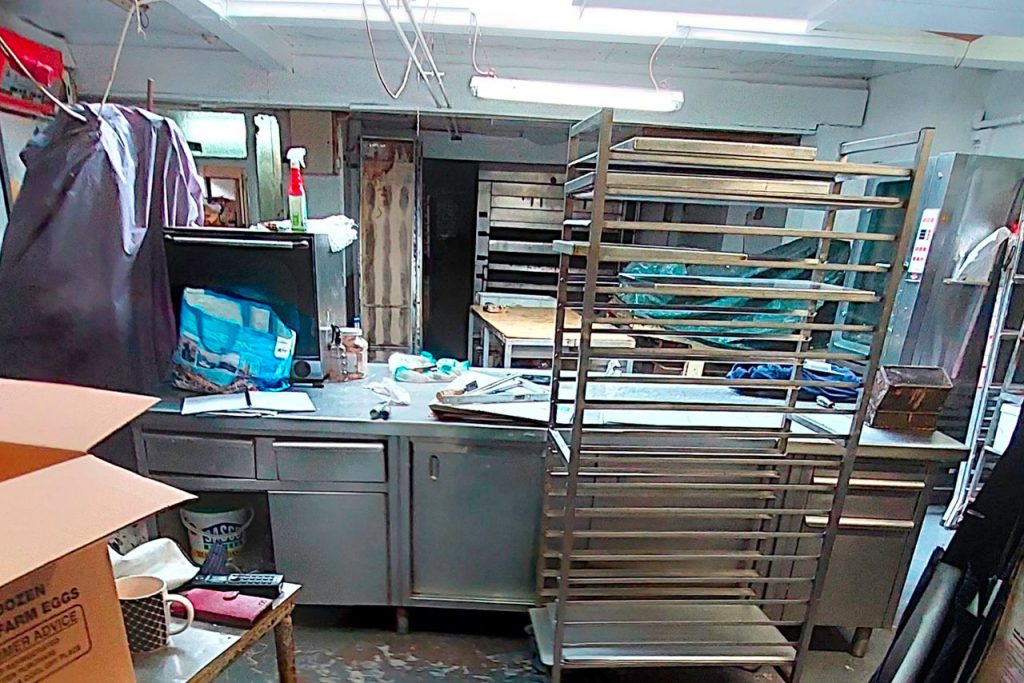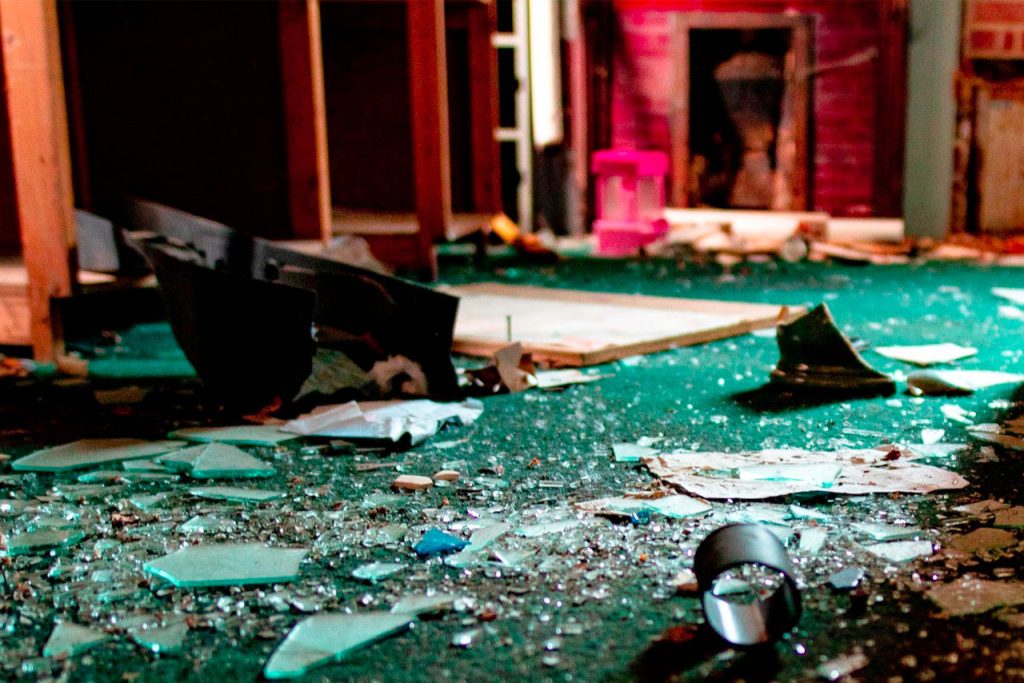As a property stakeholder nearing the end of a lease, one question looms: how do you ensure the property’s condition upholds the lease terms? Enter the schedule of dilapidation, a detailed report that helps landlords and tenants navigate the handover process. This article is your essential roadmap to understanding the function and benefits of employing a schedule of dilapidation, protecting your property’s value and avoiding potential disputes.
The Importance of a Schedule of Dilapidation
A Schedule of Dilapidations is a report that lists any repairs or maintenance needed on a property at the end of a lease. It details the condition of the property compared to when the tenant first moved in, based on the terms of the lease. The landlord uses it to outline any damages or alterations that the tenant needs to fix to restore the property to its original state or to cover the costs for these repairs. Essentially, it’s a way to make sure the property is returned in good condition, avoiding disputes over its state when the tenant leaves.
A dilapidation survey is more than a mere checklist; it’s a shield for your property’s worth and a roadmap for maintaining its condition. The significance of such surveys resonates through the fabric of property management, serving as unbiased guardians who pinpoint a building’s strengths and flaws.
Whether you’re a seasoned landlord or a real estate novice, familiarizing yourself with the intricacies of dilapidation surveys helps keep your property reflective of your forward-thinking approach and commitment to excellence.
Safeguarding Property Value
As a vigilant property manager, you understand that a building’s value is only as steadfast as its foundations and upkeep. The Schedule of Dilapidation is a crucial ally, safeguarding your asset’s financial health against depreciation. It meticulously documents any damages or alterations during a lease, ensuring that the property remains within the realms of its agreed-upon condition.
Industrial properties, in particular, are susceptible to significant wear; therefore, utilizing a Schedule of Dilapidation is like having a vigilant, ever-watchful sentinel.
Maintaining Lease Conditions

Leases are not merely contracts; they are the very sinews that bind tenants and landlords in a mutual pursuit of property preservation. When tenant moving is considered, it’s the lease conditions that dictate the state in which they must leave the premises.
The Schedule of Dilapidation concretely reminds tenants of these conditions, preventing necessary repairs from transforming into landlord damages once the lease ends. It’s an essential tool that not only maintains a property’s current condition but also fortifies the sanctity of new leases and the arrival of new tenants.
Avoiding Disputes and Legal Issues
Disputes are the bane of any property transaction, capable of derailing even the best-laid plans. The Schedule of Dilapidation emerges as a peacemaker, documenting the condition of a property at the lease’s end, thus preempting any disputes over pre-existing damage. Moreover, it frames the dilapidation charges intended to recompense the landlord for losses incurred should tenants falter in their maintenance duties.
This proactive documentation approach is key to steering clear of legal complexities, ensuring your property dealings run as smoothly as the marble floors in your buildings.
Types of Schedules of Dilapidation
Dilapidation surveys are not monolithic; they are tailored to the lifecycle of a lease. From the Property Interim Schedule, which resembles a health check-up during tenancy, to the Terminal Schedule of Dilapidations, which serves as a final assessment at lease-end, each has its unique role. Understanding the nuances between these two can be the difference between a well-maintained property and one that’s frayed at the edges, highlighting the importance of the right dilapidation process at the right time.
Property Interim Schedule of Dilapidations
The Interim Schedule of Dilapidations is conducted during the lease term to address issues before the end of the tenancy. Issued during the lease term, it alerts tenants to the necessary repairs, ensuring compliance with their lease obligations regarding property maintenance. Acting proactively with an interim schedule targets immediate repair issues before they escalate, effectively preventing the need for a more substantial and potentially contentious dilapidation claim later on.
This strategy not only maintains the building’s condition but also nurtures a cooperative relationship between the landlord and tenant, centred on maintenance and care.
Terminal Schedule of Dilapidations
A terminal Schedule of Dilapidations is prepared at the end of the lease. It outlines the works the tenant must undertake to honour their lease obligations before they vacate. It is the culmination of a professional dilapidation survey that assesses the property’s final condition, ensuring that tenants leave the property as they found it, adhering to the original lease terms.
The Terminal Schedule embodies the principle of returning the leased space in the condition it was received, preserving its integrity.
Key Elements of a Schedule of Dilapidation
A Schedule of Dilapidation is a purposeful document furnished with various tools to execute its role in property management. It reveals any defects or damages incurred during a lease, serving as a comprehensive record of the property’s condition. The schedule is not just a list but a detailed account that includes items of disrepair, breaches of covenants, and quantified demands, each playing a pivotal role in maintaining the sanctity of the lease agreement and the property itself.
Items of Disrepair and Costs

When it comes to a Schedule of Dilapidation, the devil is in the details—specifically, the items of disrepair and their associated costs. These items can range from structural to cosmetic, and their cost estimation is an art in itself, supported by invoices or detailed estimates. Surveyors assess these costs, which may encapsulate tenant liabilities such as repairs, loss of rent, and professional fees.
Attending to these items before the end of the lease not only maintains the property’s prime condition but also avoids its descent into a state of disrepair, guaranteeing its value is preserved through maintenance contracts. Ensuring the property before signing any contracts is essential for both parties involved.
Breaches of Repairing Covenants

The Schedule of Dilapidation is also designed to protect covenants related to maintaining and repairing the property, which are agreed upon in the lease. These covenants are essential for protecting the landlord’s property value, and any breaches are swiftly identified within the schedule.
An Interim Schedule can serve as a formal nudge, reminding tenants of their obligation to uphold the property’s condition, ensuring that the landlord does not bear the brunt of neglected repairs. It is a proactive measure that safeguards both the physical structure and the legal integrity of the lease agreement.
Quantified Demands
Quantified demands outline the monetary impact of damages and any argued breaches of lease terms. These demands, typically issued at the end of a lease, provide a clear estimate of the costs the landlord believes are due to them, including a timeline for the tenant’s response. The Dilapidations Protocol guides this process, setting standards for document clarity and ensuring that negotiations are conducted professionally.
This financial assessment, which can be considered an independent assessment, holds tenants accountable and provides landlords with the capacity to address lease breaches.
The Dilapidation Survey Process
The dilapidation survey process guides the journey from a bustling property to a serene one, ready for its next chapter. This systematic approach employs chartered building surveyors to conduct a highly detailed survey, identifying potential damages or required repairs.
This process should not be left to the last minute but rather start well before tenants leave rented commercial properties, providing sufficient time for evaluation and necessary actions. It’s a process that moves with precision and care, ensuring that every nook and cranny of the property is maintained according to the lease agreement.
Hiring a Professional Surveyor
Selecting the right professional for a dilapidation survey requires a surveyor who:
- Possesses the right qualifications
- Brings an impartial perspective to the inspection
- Has expertise that matches the building’s specific needs
- Can guarantee that the resulting Schedule of Dilapidations accurately represents a condition date baseline.
K&A Surveyors, with our wealth of experience in conducting numerous Schedules of Dilapidation, fit these criteria perfectly. We are regulated by RICS, ensuring that our practices meet the highest standards. Landlords and property managers need to provide these experts, like us at K&A Surveyors, with all relevant lease documentation to craft a report that will withstand scrutiny and time, including covering the landlord’s professional fees. With our expertise, we ensure that every Schedule of Dilapidation we handle is thorough and precise, protecting all parties involved in the leasing process.
Conducting the Survey

Conducting a dilapidation survey is a detailed process, with chartered surveyors carefully documenting every aspect of the property’s current condition. It’s a detailed survey that leaves no stone unturned, examining both the interior and exterior conditions, from the wall finishes to the rainwater systems. Surveyors use an arsenal of tools, including written notes, photographs, and specialized equipment, ensuring that every identified fault is recorded precisely. Dilapidations surveys are an essential part of property management and maintenance.
Access to historical documents, such as original lease agreements and schedules of condition, is paramount for accurately reflecting the tenant’s repair obligations.
Producing the Report
Upon completion of the survey, a comprehensive report is generated, providing an authoritative statement on the property’s condition. The report includes:
- A cover page
- A summary
- A site layout plan marking defects
- Comprehensive photographs, ensuring that every critical area is accounted for
The report also details the necessary repairs, their completion timeline, and the conditions under which the inspection was conducted.
Dilapidation costs within the report result from careful assessment, providing a financial compass for the landlord as they navigate the repair process.
Understanding Dilapidation Charges
As a lease tenure draws to a close, dilapidation charges often take centre stage. These charges allow the property to be restored to its initial state, adhering to the lease agreement’s terms and preserving its value. For tenants, it’s a reminder of their responsibilities, and for landlords, it’s a measure to recoup costs incurred due to the tenancy’s wear and tear.
Understanding these charges involves not only recognizing the costs involved but also comprehending their wider role in the property leasing ecosystem.
Purpose of Dilapidation Charges
The driving force behind dilapidation charges is rooted in the principles of fairness and restoration. They are a landlord’s safeguard, compensating for any repair work or reinstatements arising from a tenant’s actions throughout their lease. These charges extend beyond the immediate scope of repairs, potentially encapsulating claims for lost rent and the property’s devaluation if not rectified by the lease’s end.
It’s a financial remedy that balances the scales, ensuring that landlords are not left in a lurch due to a tenant’s neglect or modifications.
Calculation of Charges
Navigating the calculation of dilapidation charges can be as intricate as a financial tapestry. These charges may weave together various elements such as the cost of repairs, loss of rent during the period the property remains unlet due to disrepair, and even the landlord’s professional fees. This is a nuanced process where the projected costs outlined in the Schedule of Dilapidations may vary from the actual expenses needed to settle the financial damages claim.
Furthermore, tenants should be aware that the lease agreement might stipulate that they bear the cost of the dilapidation survey itself.
Tenant Responsibilities
Tenants bear significant responsibility regarding dilapidation charges. Upon receiving a schedule of dilapidations, tenants have a choice: to personally undertake repairs, pay the agreed compensation, or challenge the notice. Smart tenants negotiate before signing the lease to exclude certain fittings from their repair responsibilities, ensuring that they’re not held accountable for fixtures irrelevant to the landlord post-tenancy. By responding promptly to a Quantified Demand and addressing maintenance issues proactively, tenants can mitigate potential dilapidation costs and navigate the end of the lease with minimal financial impact.
However, they should anticipate dilapidation costs that may encompass not only repairs but also additional losses if the property is not quickly re-let.
The Dilapidation Protocol
The Dilapidations Protocol serves as a guide for landlords and tenants navigating through the complexities of dilapidation claims and disputes. It provides:
- A structured approach
- Fair play
- Timely information exchange
- A clear pathway towards resolution
The protocol aims to avoid the tumultuous route of court proceedings.
This protocol is the legal atlas, encompassing the expected conduct and providing a framework for resolving disputes outside of court. It ensures that legal action is a last resort rather than a first step.
Purpose of the Dilapidation Protocol
The Dilapidations Protocol serves an honourable purpose:
- to enable fair and efficient resolutions amidst property maintenance and repair disputes
- to encourage early and comprehensive information exchange, reducing the likelihood of legal proceedings
- to ensure that procedures are managed efficiently in cases where court action becomes inevitable
- to settle disputes with minimal conflict
The protocol also emphasizes Alternative Dispute Resolution (ADR) as a preferred method for reaching settlements, offering a fair platform for both parties to present their cases and settle amicably.
Key Steps in the Process
The Dilapidation Protocol orchestrates a sequence of procedural steps, including:
- The landlord acknowledges the need for a Schedule of Dilapidation as a lease nears its end or when lease breaches become evident.
- A surveyor’s inspection pinpoints any required actions and compares the property’s condition against lease obligations.
- Creating meticulously detailed documentation provides a foundation for potential dilapidation charges and a platform for discussion between the landlord and tenant.
It’s a choreography of details and negotiations, with the Schedule acting as an invitation for both parties to come together and amicably resolve any issues.
Resolving Disputes
Regarding resolving disputes, the Dilapidations Protocol and the Dilapidations Dispute Resolution Scheme (DDRS) offer a duet of dispute resolution methods. The willingness to engage in ADR is encouraged and may influence a court’s decision on legal costs, making it an essential consideration for both parties.
The DDRS offers:
- a faster, cost-effective alternative to court proceedings
- an Independent Expert overseeing a balanced and fair resolution process
- the ability to continue the process even if one party becomes uncooperative, ensuring no deadlock in dispute resolution.
Ultimately, if negotiations or ADR fail, court action may be the final avenue, though it is often more costly and time-consuming than resolving the dispute through the Dilapidations Scheme.
Tips for Landlords and Tenants
Dealing with the complexities of property maintenance and dilapidations necessitates not only knowledge but also foresight and strategic planning. Here are some key points to keep in mind:
- Landlords must use the Schedule to maintain property standards.
- Tenants must fulfil their lease obligations diligently.
- Seeking advice on dilapidations before a lease ends allows tenants to negotiate settlements or schedule repairs cost-effectively.
Being proactive is not just a precaution; it’s a tactic that can result in significant savings and a smoother transition at the lease’s conclusion.
Communication and Negotiation
The art of communication and negotiation is a potent tool in the landlord-tenant relationship, particularly when it comes to managing dilapidation issues. Incorporating a Schedule of Condition in the lease can be a strategic action, establishing a condition date baseline that assists in future negotiations over dilapidation costs. Landlords can provide sage advice on lease obligations and use legal protection to strategize for an agreeable outcome regarding property maintenance.
Issuing Interim Schedules communicates immediate repair needs to tenants, maintaining the expected property standards. Engaging professional third party services or mediators can help resolve issues amicably, preserving relationships and minimizing the need for litigation.
Understanding Lease Terms
For tenants, a thorough understanding of lease terms serves as a guard against unforeseen dilapidation claims and a guide to regular property maintenance to reduce repair needs. Landlords are not obligated to notify tenants of the works needed for dilapidation, emphasizing the tenant’s responsibility to comprehend and act according to the lease terms.
This understanding is crucial to navigating the end of the lease without the burden of excessive repair costs or disputes, keeping the premises in good standing for the new tenant.
Planning for Future Repairs
Planning for future repairs can be a tenant’s saving grace, softening the impact of dilapidation charges at the lease’s end. Landlords can utilize Interim Schedules to address concerns about inadequate maintenance, detailing specific issues and required remedial work.
For tenants, these charges can have a tangible impact on their balance sheet, underscoring the importance of maintaining the property to its original condition and avoiding an unrepaired state. Regular maintenance checks and timely repairs are not just acts of diligence; they’re investments in the property’s longevity and the tenant’s financial health.
Summary
In the grand theatre of property management, the Schedule of Dilapidation plays a starring role, ensuring that the value and integrity of a building are preserved throughout its tenancy. From the detailed process of hiring surveyors to conducting surveys and calculating charges, each act is critical in maintaining the condition of a property. Landlords and tenants alike must embrace their roles, negotiate terms, and plan for future repairs to avoid the drama of disputes and the cost of neglect. As the curtain closes on our guide, remember that with knowledge, foresight, and diligent care, your property can remain a testament to your investment acumen and attention to detail.
Key Takeaways
- A Schedule of Dilapidation is a comprehensive tool for safeguarding property value and maintaining lease conditions while anticipating and avoiding disputes or legal complexities. It thoroughly documents the property’s condition and any damages incurred during the tenancy.
- Detailed dilapidation surveys tailored to different stages of the lease lifecycle (i.e., Interim and Terminal Schedules) are essential for providing timely repairs and maintaining property standards, ensuring tenants leave the property as initially found and upholding the sanctity of the lease agreement.
- The Dilapidations Protocol is vital for outlining procedures for resolving disputes efficiently and amicably through structured approaches, emphasising Alternative Dispute Resolution to prevent costly and time-consuming court proceedings while maintaining fair and balanced negotiations between landlords and tenants.


